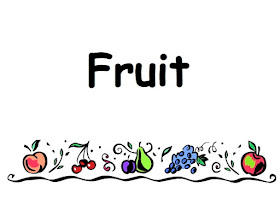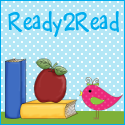When there are 12 different GF bread mixes, which one is good? In this post I will share with you what my family has found to be "the best" after 10 years of trial and error and eating gluten free.
First, I found there were lots of great "from scratch" recipes. I did that for awhile but found I needed to keep about a dozen different flours and starches on hand for every different recipe. That became cost prohibitive and a pain in the neck. I narrowed it down to a few favorite mixes. I've included a link to the product website with each photo. Most company websites have a way to find which stores in your area sell the product.
Breads and baked goods
 |
| Gluten Free Pantry |
It also makes a great pizza crust. We use this method of making pizza when we cook pizza in the dutch oven on camping trips.
In another post I show how to use one box of this bread mix to make bread for Three Meals, including hamburger buns.
Keeping a few boxes of this on hand will do more than provide bread for sandwiches.
If you don't want to make your own sandwich bread and/or hamburger buns, our favorites are Canyon Bakehouse Mountain white bread, and Canyon Bakehouse hamburger buns. Grilled cheese sandwiches on this bread is a frequent lunch at our house.
While you can make great pizza crust with the bread mix, for a nice thin crust pizza we really like Namaste brand pizza crust mix. This is what we usually use for our weekly Saturday night pizza.
 |
| Namaste Food |
We usually make fresh pizza, but I always have a few Udi's pizza crusts in the freezer for when I need to throw together a quick meal at the last minute that the kids will eat. These are really yummy! A little tomato sauce and cheese and you are all set! You can also brush on a little olive oil and seasonings for a nice crisp flat bread (They served it like that as an appetizer at Disneyland and now we do it at home!)
 |
Udi's Another staple at my house is Pamela's Baking and Pancake Mix. This does contain almond flour and milk, so if you are avoiding either of those this won't work for you. The almond flour adds a nice texture along with some protein and fiber that is lacking in most GF flours. I share my favorite scone recipe in my Staples for a Gluten Free Kitchen post. Another staple at my house is Pamela's Baking and Pancake Mix. This does contain almond flour and milk, so if you are avoiding either of those this won't work for you. The almond flour adds a nice texture along with some protein and fiber that is lacking in most GF flours. I share my favorite scone recipe in my Staples for a Gluten Free Kitchen post.
These make great pancakes. I have also found that I can use this mix, cup for cup, to replace "regular" flour in most "regular" recipes for things like muffins, quick breads, and cookies. Just keep in mind that this mix already has baking soda in it, so you can leave it out of the recipe.
For the BEST chocolate chip cookies follow the same recipe you always have on the back of the chocolate chip bag, using Pamela's Baking and Pancake Mix instead of the flour and baking soda. They are so yummy! For the best cookies use the Ghirardelli brand dark chocolate chips because they are all natural (most brand have artificial vanilla, "vanillin", which is just gross. Do some research and you'll agree.)
|
 |
| Pamela's |
Pamela's Gluten-Free Bread Mix also makes great bread and rolls. I really like the bagel recipe on the back. Both of the Pamela's mixes can be purchased in large bags to save some money.
I keep all of my flours and mixes in the refrigerator to extend shelf life.
For the best brownies, you must try the Pamela's Chocolate Brownie Mix. You can bring these to a pot luck and never mention that they are GF and your friends will be asking you for the recipe.
What about chocolate cake? King Arthur Flour recently came out with a line of gluten free mixes. The quality is excellent! You can make a moist and delicious chocolate cake using the King Arthur gluten free chocolate cake mix. To do any chocolate cake justice you must frost it with "PERFECTLY CHOCOLATE" CHOCOLATE FROSTING
 |
| King Arthur Gluten Free |
Pasta
You don't have to live without pasta!! I absolutely love the Tinkyada brand pasta. They come in every pasta shape, including lasagna. They are made from brown rice, rice bran and water, so they are actually whole grain and healthy. I found all of the other pasta brands I tried were too mushy. These you can cook and eat al dente:

Snacks
One of the hardest things about eating gluten free is when you are on the go. It is hard to stop and grab a quick bite to eat. Fortunately, that saves you from most drive throughs. I'm glad to say that I've never taken my kids to McDonalds. We do enjoy some hand scooped milk shakes and french fries from a dedicated frier at Carl's Jr. now and then, I must admit.
You can always have fruit and nuts. Those are pretty easy to keep on hand. I also like some beef jerky or cheese sticks when I need some protein. These are some favorite GF snacks to have on the go:
The think thin high protein bars are gluten free. My favorite is the crunchy peanut butter!
 |
| Think Thin |
Glutino makes great GF pretzels (and if you are lucky you can find the chocolate covered ones for a treat!)
 |
| Crunchmaster |
We all like the Crunchmaster brand crackers, especially the Multi-Grain varieties. They taste very buttery to me, though they have no butter in them. The kids like them and they have whole grain in them, enough said.
Now tell me, what is your favorite gluten free specialty food?
















































